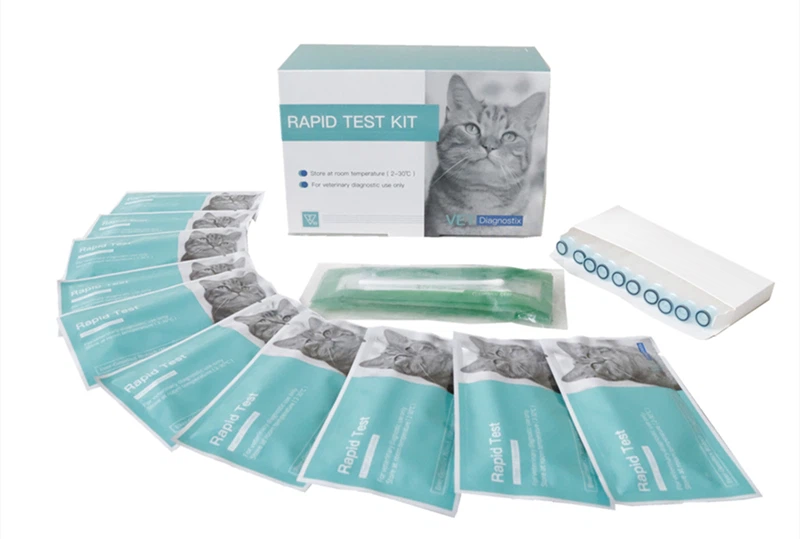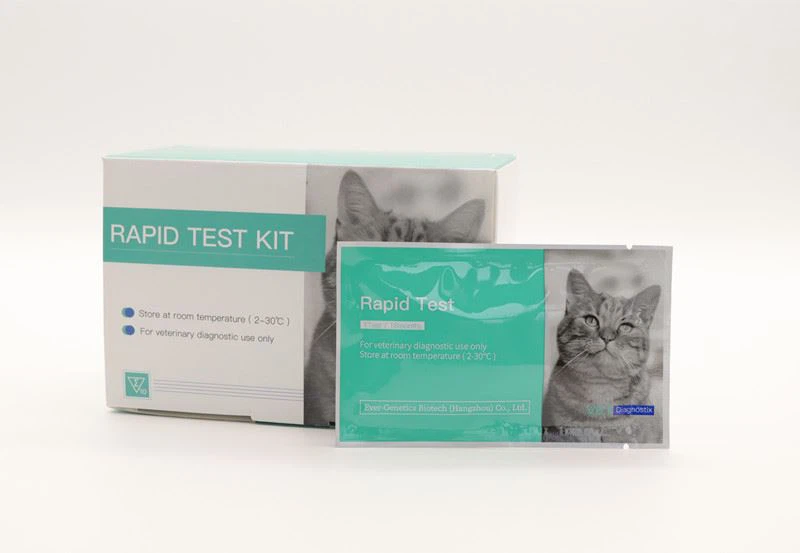
Feline Pancreas-specific lipase Quantitative Test
FPL Test Canine Panereatie Lipase Rapid Test is a rapid test strip developed based on immunochromatographic colloidal gold technology for quantitatively detecting the concentration of pancreatic lipase in cat blood. This product provides a basis for the clinical diagnosis of feline pancreatitis by measuring the concentration of feline pancreatic lipase in cat blood samples.
Detection limit: 3μg/L~600μg/L
Detection time: 10 minutes
Test samples: serum, plasma

| Product Name | fPL Test feline Panereatie Lipase Rapid Test |
| Specimen | Serum, plasma or whole blood |
| Assay Time | 5-10 minutes |
| Part No. | VD081 |

Principle
This product uses rapid immunochromatography technology to detect the concentration of cat pancreatic lipase. After adding the sample to the sample well of the test paper card, if there is pancreatic lipase in the sample, and the concentration of pancreatic lipase is greater than or equal to 3 μg/L, the pancreatic lipase will bind to the corresponding specific antibody labeled with colloidal gold to form a complex along the layer. The chromatographic membrane moves and is captured by the pancrelipase-specific antibody pre-coated on the chromatographic membrane, forming a wine-red detection line at the T position of the stuck shell, and the pancrelipase concentration result can be output by the ICA image analyzer. In addition, a C line is also designed in the system to verify the validity of the experiment. Regardless of negative or positive results, the line should be colored, otherwise it will be judged as an invalid result.
Reagens and Materials
-10 test pouches, with cards and desiccants
-10 capillary droppers
-1 bottle of assay buffer
-1 package insert

SPECIMEN PREPARATION
1. Samples should be processed as follows
- Serum or plasma: Collect whole blood samples from cats to be tested, and stand to separate out serum or centrifuge to separate plasma for later use.
2. All samples should be used for testing immediately, if not, they should be refrigerated (2-8°C). Refrigerated samples need to be restored to 15-25°C before they can be used for testing.
TEST PROCEDURE
Allow all materials, including specimen and test device, recover to 15-25 before running the assay.
- Take out the test card from the foil pouch and place it horizontally.
- Use the capillary dropper to suck specimen and place 1 drop (approx. 10μL) of the prepared specimen into sample hole “S” of the test card. Then drop 3 drops (approx. 90μL) of the assay buffer into the sample hole. Start the timer.
- Interpret the result in 5-10 minutes. Result after 10 minutes is considered as invalid.

ADVANTAGETechnology Advantage
Easy and fast operation, can be standardized
-----Report in 30min, significantly better than traditional methods (need to incubate 18-24h)
High accuracy and sensitivity
-----Low potency can be detected to prevent missed antibody detection
Simultaneous diagnosis of acute/chronic infection
-----Simultaneous determination of IgM/IgG/IgA, can diagnose acute and chronic infections
Results interpretation is clear and objective
Good detection repeatability
Results can be stored for future reference


